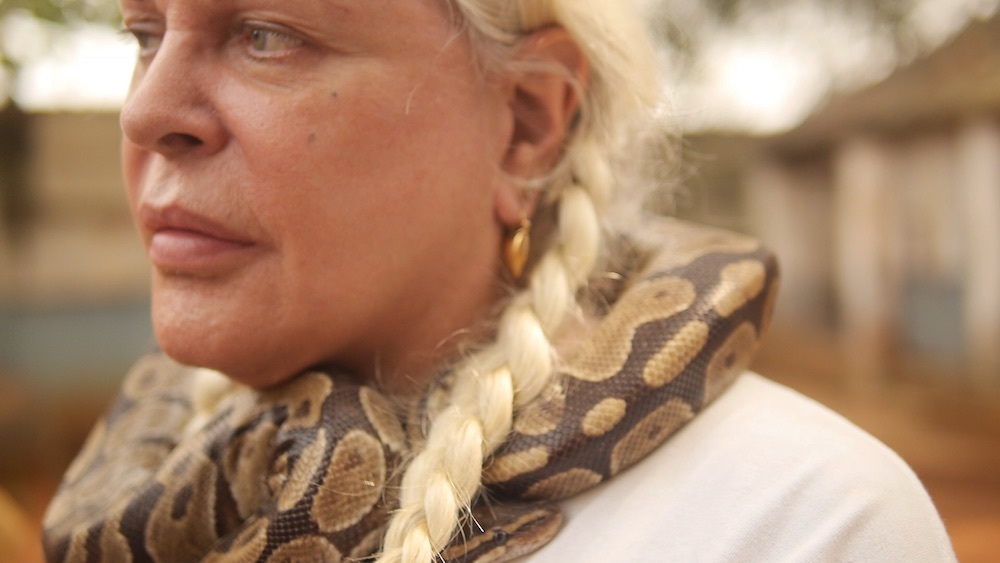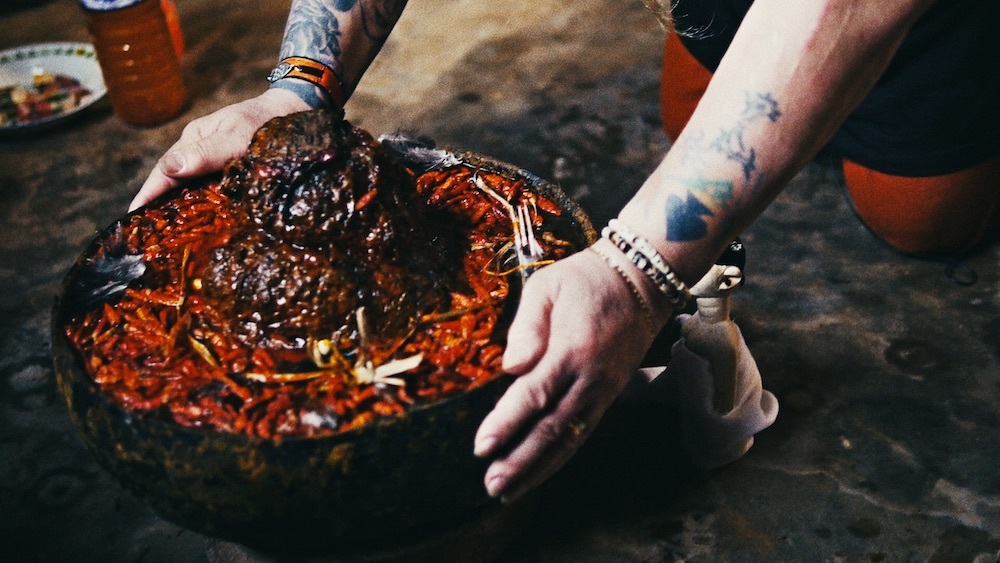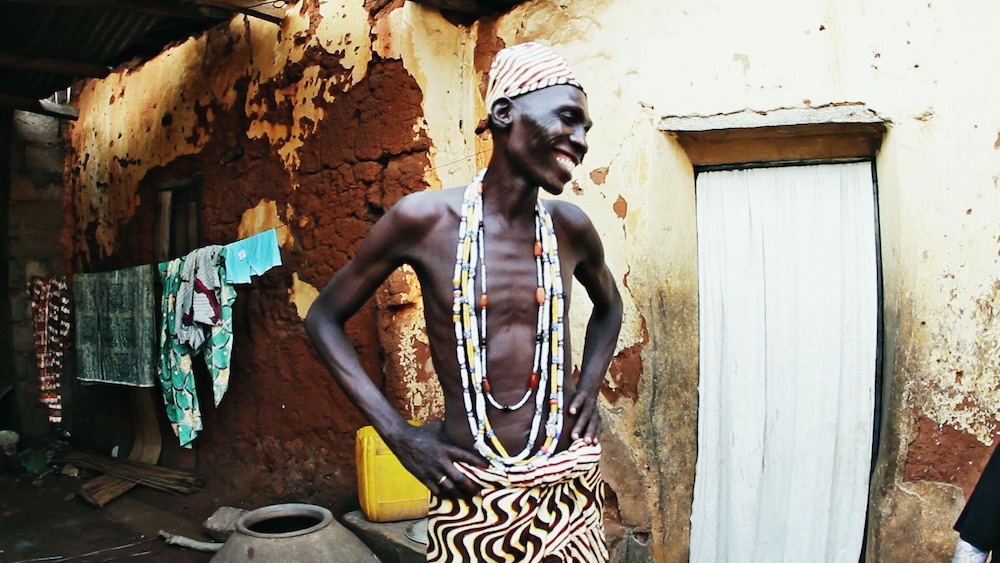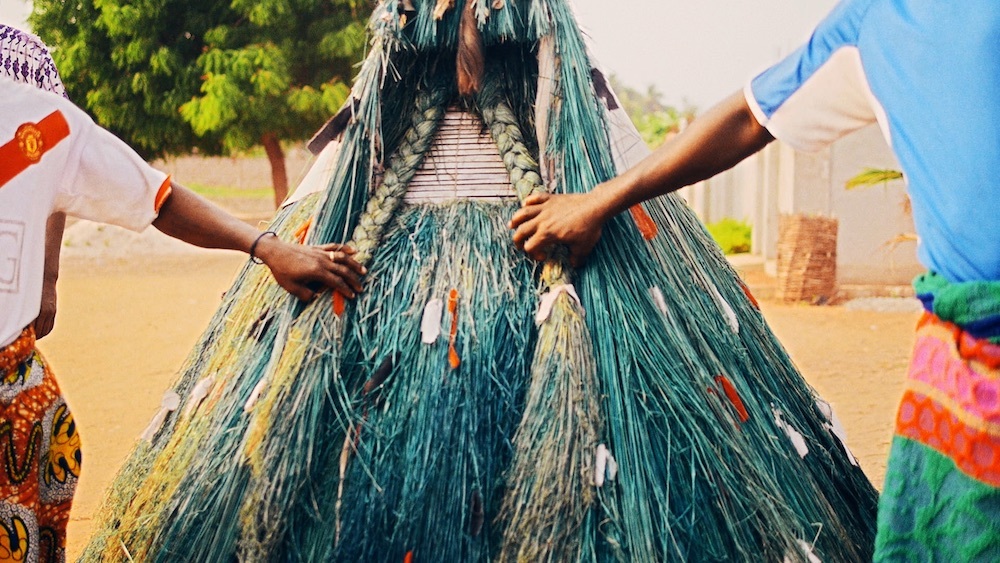British experimental artist Genesis and h/er spouse Lady Jaye became one as Breyer P-Orridge in 1993, when the duo began $200,000 worth of cosmetic surgeries to look as similar as possible. The couple created the term “pandrogryne” to define their combined sexuality, and used the pronouns s/he and h/er, as a reference to a plural “we”. Breyer P-Orridge collaborated as one, using each other as muses for music and art projects until Lady Jaye’s death in 2007. Genesis still operates under the “we” pronouns in Lady Jaye’s absence.
In an effort to come to terms with the death of Lady Jaye, Genesis travelled to Ouidah, Benin in West Africa with artist Hazel Hill McCarthy III. In Ouidah, the duo became heavily involved with the region’s Vodoun (voodoo) religion, as Genesis discovered a completely different yet stunningly familiar culture to her own pandrogynous lifestyle. The duality of pandrogyny draws a sharp parallel to the Vodoun practice of “twin fetish,” a ceremony dedicated to biological twins. Benin sees a notably high rate of twin birth rates, and Vodoun culture values them as spiritual vessels of God. Genesis and Hazel documented the region’s dark mysticism in the otherworldly film Bight of the Twin. Ahead of the film’s screening at the Rubin Museum, i-D spoke with McCarthy about what exactly went down in Ouidah.
Tell us about the inspiration behind Bight of the Twin.
Hazel McCarthy: It all came from working with Genesis on Thee Psychick Bible [Genesis’ most recent art project], which was back in 2009. It was through that process that we got to be better friends and I got to see her art process, and how she weaves methodology and iconography into everyday life. After the book came out, we wanted to do a little vacation together so we went to Kathmandu. We were online clicking through things and I showed her this Guardian article about the annual [Benin] voodoo festival and we saw these amazing costumes that looked kind of like early Leigh Bowery. They were very grotesque and beautiful at the same time. And Genesis looked at them and felt like they were very similar to what she had seen in Haiti, with the applique and sequins, and there was this parallel with voodoo. And it was obvious, like, of course we have to do this. Of course we have to go and explore what these parallels are.
What was filming in the region like? Had you been to Benin before?
No, it was solely based off of this article. We got inducted pretty quickly though. The very specific voodoo there, which is the twin voodoo, it’s called the twin fetish. And this whole experience wouldn’t have happened without Genesis’ experience with Lady Jaye and also Genesis’ approach to life in general which is just no expectations and no judgement. If you go in with that attitude, other humans have a positive reaction because they’re less scared that you’re going to take something that is very precious from them and utilize it to a greater gain. That’s why the film itself is more of like an activation than an art piece or an art form. It’s not meant to be some sort of blockbuster, and it’s not meant to exploit the African spectacle. I think that’s really important as far as the message of this film.

So you feel like you were on the same page as all the people you filmed.
Yeah, and we’re still very close to them….But their voices are there as much as Genesis’ is. I think it’s important to note that it’s way more than just hers.

What exactly is twin fetish?
In voodoo itself, twins are a higher god, and how they created the world is that they came together as one and birthed these different gods and deities. So there are a lot of similarities with the religion internationally. But ultimately, the creator god is two gods, and in Ouidah specifically, where we were filming, they have a really high number of twin birth rates. Science is trying to figure out why that is, but the people of Ouidah believe that because they pray and honor twins so much, that’s why the gods favor them being born there. So, the twin fetish is honoring twins as a deity, and as a god form. If a twin dies, they don’t consider the twin dead. They say that the twin has gone to the forest to look for wood. So you must always honor these twins, and honor their existence and keep them present in your mind. So, when a twin has lost their other, they have to go through this ceremony: to make sure that the twin that’s gone is still connected to the twin that’s still alive.
That gets commemorated in a tiny wooden doll, called a Jumeaux….So now, it’s Genesis’ responsibility to carry that Jumeaux with her, or to carry Jaye with her at all times. She’d never have lost sight of Jaye’s memory, but now there’s a physicality of that loss, which is completely different than how we in the West consider death and dying. We have our cemeteries and our edifices, but those are always in one specific place that you visit maybe during specific times of the year. This is constant.

What do you hope people take away from the film?
I think mostly it’s just getting out and exploring more. Not necessarily taking someone else’s culture and saying it’s yours, but I think exploring beyond the computer, you’ll find that humans are humans. There are so many similarities and commonalities, much more than differences. The fear of exploring comes with differences. Take it into your hands, and just say “we’re similar.”

Credits
Text Annie Armstrong
All images courtesy of the artists.
